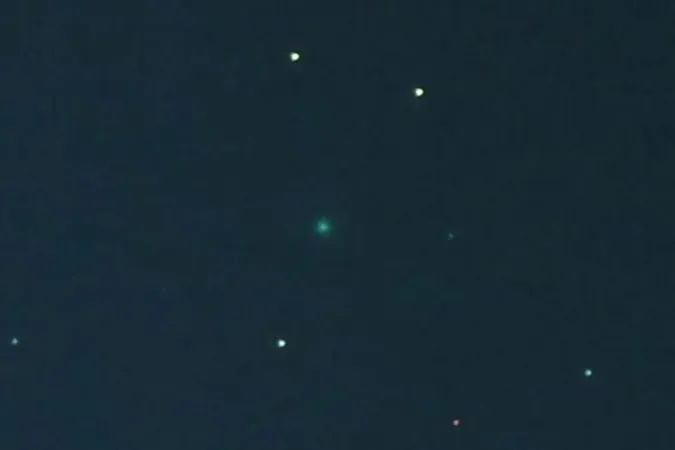
Catch the Celestial Show: New Comet C/2025 F2 (SWAN) Graces Our Morning Sky!
2025-04-10
Author: Wei
A New Star is Born in Our Skies!
Exciting news for skywatchers! A dazzling new comet, C/2025 F2 (SWAN), is lighting up the morning sky, ready to capture the hearts of stargazers everywhere.
Where to Spot This Cosmic Marvel
To catch a glimpse of this celestial gem, look low towards the east just before dawn. Nestled within the famous Great Square of Pegasus, this comet may be elusive with its current magnitude of +8, making it a challenge for the naked eye. But fear not! Amateur astronomers and enthusiasts are already using telescopes to capture stunning images before twilight washes it away.
The Journey of Discovery: From Observations to Confirmation
The discovery of Comet C/2025 F2 (SWAN) is a fascinating tale. Unlike the days when amateur astronomers were the forerunners of comet hunting, this icy wanderer was detected through a combination of robotic survey telescopes and dedicated visual checks from comet observers analyzing images from NASA's SOHO solar observatory.
What to Expect When You Look Up
Visually, Comet C/2025 F2 (SWAN) might appear like a fuzzy star through telescopes, but those long-exposure shots reveal its ethereal qualities, including a slender tail stretching at least a degree long and a mesmerizing green hue. As it travels, it will brighten, but keep in mind that the brightening sky will pose a challenge.
Upcoming Highlights: A Bright Future Ahead!
Mark your calendars! This comet is set to reach perihelion, its closest point to the Sun, on May 1, 2025. By then, it will become an evening object in the constellation Taurus and is expected to shine at a magnitude of +4, plenty bright enough to see in dark skies but still low on the horizon, especially for those in mid-northern latitudes.
Safety First: Observing Tips
As always, safety is key when observing. If you're planning to use binoculars or a telescope, do so at twilight when the Sun has sunk below the horizon. Never aim your equipment toward the Sun, as this can cause serious eye damage.
Final Thoughts: Is It Worth the Effort?
While Comet C/2025 F2 (SWAN) won't shine as brightly as its predecessors like Hale-Bopp or C/2023 A3, it's still worthy of your attention. With its potential to brighten and display an extended tail, who knows what wonders might emerge as it journeys through our sky? For those in the southern hemisphere, your views will be even better!
Stay tuned for updates and gear up to find this captivating comet using popular stargazing apps!




 Brasil (PT)
Brasil (PT)
 Canada (EN)
Canada (EN)
 Chile (ES)
Chile (ES)
 Česko (CS)
Česko (CS)
 대한민국 (KO)
대한민국 (KO)
 España (ES)
España (ES)
 France (FR)
France (FR)
 Hong Kong (EN)
Hong Kong (EN)
 Italia (IT)
Italia (IT)
 日本 (JA)
日本 (JA)
 Magyarország (HU)
Magyarország (HU)
 Norge (NO)
Norge (NO)
 Polska (PL)
Polska (PL)
 Schweiz (DE)
Schweiz (DE)
 Singapore (EN)
Singapore (EN)
 Sverige (SV)
Sverige (SV)
 Suomi (FI)
Suomi (FI)
 Türkiye (TR)
Türkiye (TR)
 الإمارات العربية المتحدة (AR)
الإمارات العربية المتحدة (AR)